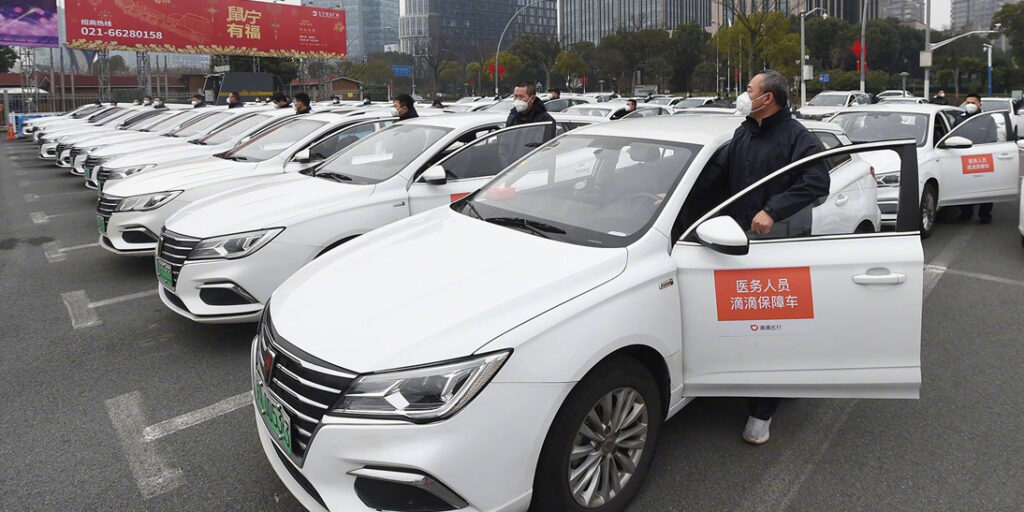
China’s National Digital Currency Project Enrolls Over 20 Companies as Partners
by Fintech News Hong Kong July 27, 2020Support and adoption of the Chinese national digital currency project, the Digital Currency Electronic Payment (DCEP), is accelerating with now more than 20 companies having joined as partners.
Only eight firms were originally announced, including four state-owned banks (Industrial and Commercial Bank of China (ICBC), China Construction Bank, Agricultural Bank of China, and Bank of China), the big three telcos (China Telecom, China Mobile and China Unicom) and Huawei.
In April, the People’s Bank of China (PBOC) announced that banks were conducting internal test of the digital currency in four cities, namely Shenzhen, Suzhou, Chengdu and Xiong’an, a new smart city in the making close to Beijing.
During the ongoing trial period, the commercial banks converted some of their central bank deposits into digital currency, and chose the sectors of the economy with large volumes of daily payments that would start using digital yuan. These included transportation, education, and retail.
The central bank has also asked large retailers and merchants including Starbucks, McDonald’s and Subway to test the new system.
DCEP enrolls tech platforms for trial

Image Credit: Didi Chuxing
Most recently, the DCEP project reached a new milestone when it was unveiled that ride-hailing app Didi Chuxing and food delivery giant Meituan Dianping signed on to trial the digital currency on their platforms. Didi Chuxing boasts a client base of about 550 million, while Meituan Dianping, which provides services ranging from meal delivery to online travel, has nearly 450 million customers and about 6 million companies selling their products on the platform. The move will provide the PBOC with the opportunity to test out its digital currency with a wide market of consumers.
The PBOC’s research wing is now said to be in discussions on trials with Bilibili, a video streaming app that counts more than 170 million monthly active users.
In the next phase of deployment, the digital currency will be distributed to large fintech companies such as Tencent and Alibaba to be used in WeChat Pay and Alipay, respectively, according to a report by Chainnews.
The PBOC’s digital currency project

The PBOC has been working on a digital currency since 2014. In 2017, the central bank officially inaugurated its Digital Currency Research Institute, which was put in charge of developing and testing the digital currency.
Once fully operational, the digital currency will be used to simulate everyday banking activities including payments, deposits and withdrawals. Citizens will need to download a digital wallet application authorized by the PBOC and link their bank account. The money from the linked account will be converted into digital cash on a one-to-one basis.
Some of the DCEP system’s particularities will include the option to hold digital yuan and conduct transactions without the need of a bank account, as well as the ability to make transactions without an Internet connection through a function called “touch and touch.”
These features could potentially make the digital currency accessible to the 225 million people in China who have no access to the banking system, dramatically improving financial inclusion.
For the PBOC, the digital currency could also allow it to see exactly where money goes and keep track of every transaction. Tax avoidance and tax evasion would be then become much more difficult.
Central banks accelerate development of CBDCs
With so many developments being made this year already, the DCEP is on the path to becoming the world’s very first widespread digital currency deployed and operated by a major economy’s central bank.
Though the DCEP might well be the most advanced central bank digital currency (CBDC) project to date, it is far from being the only one currently in the works.
The Bank of Japan unveiled earlier this week that it had appointed a new team to closely examine CBDCs. The team will follow up on the central bank’s efforts so far on CBDCs, including joint research it has been conducting with other major central banks since January.

In Thailand, the Bank of Thailand (BOT) has entered the third phase of development of its CBDC and is now planning to expand its use among large businesses. In September, the BOT will begin using the digital currency for transactions with the Hong Kong Monetary Authority, Vachira Arromdee, BOT’s assistant governor, said on July 15.
In Europe, the Bank of Lithuania officially issued its digital collector coin, LBCOIN, on July 23. The central bank says LBCOIN “is not only the first digital coin issued by a central bank in the euro area, but also across the world.”
No definite launch date for China’s digital yuan has been announced yet, but Yi Gang, governor of the PBOC, said in May 2020 that the central bank will be planning another trial during the 2022 Winter Olympics in Beijing.








